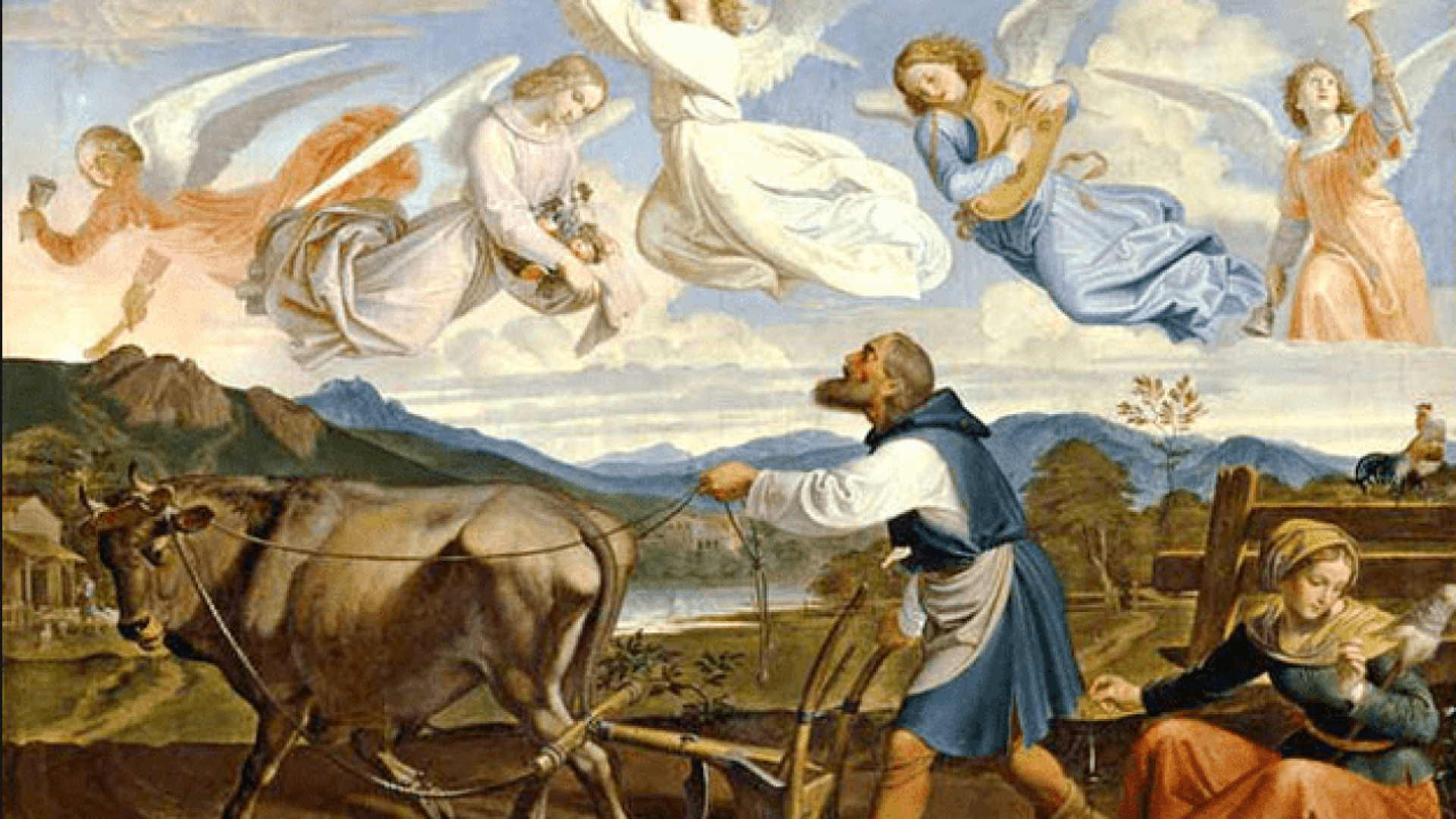St. Isidore the Farmer

St. Isidore the Farmer was born into a poor family in Madrid, Spain, in the year 1080. As a young boy, he was sent to work as a day laborer and farmer for a man named John de Vergas, a position he filled for the rest of his life. He married a good Catholic young woman named Maria Torribia. In Spain, she is venerated as Saint Maria de la Cabeza. They were blessed with one son, who died unexpectedly.
St. Isidore's employer, during a visit to the fields, once asked him if there was water nearby to slake his thirst. The saint directed him to a spring, but de Vergas couldn't find it. St. Isidore said, "Come with me and I will show you the spring." When he reached a certain dry spot at the corner of the field, the saint pricked the earth with his ox-goad. A spring bubbled up, and still flows to this day. Many people visit the fountain to ask St. Isidore for healing.
Every morning, St. Isidore attended the Holy Sacrifice of the Mass. He was often late to work because of this. One day, de Vargas lay in wait to try to catch Isidore, so he could discharge him for negligence. The shocked landowner saw the plowing being done by angelic hands, guiding white oxen. Another time, angels were seen working alongside St. Isidore, while he prayed.
St. Isidore died on May 15, 1120 at 60 years of age. Many years after his death, he appeared to King Alphonsus of Castile when he was fighting the Moors in the Pass of Navas de Tolosa. The saint showed the king a hidden path, through which he was able to surprise and defeat the Muslims. This was one of the miracles considered for his canonization.
This humble laborer was canonized in 1622, along with St. Ignatius of Loyola, St. Francis Xavier, St. Teresa of Avila, and St. Philip Neri. Saint Isidore's body is incorrupt, and rests in the Cathedral of Madrid. He is the patron saint of peasants, farmers, day laborers, and rural communities.